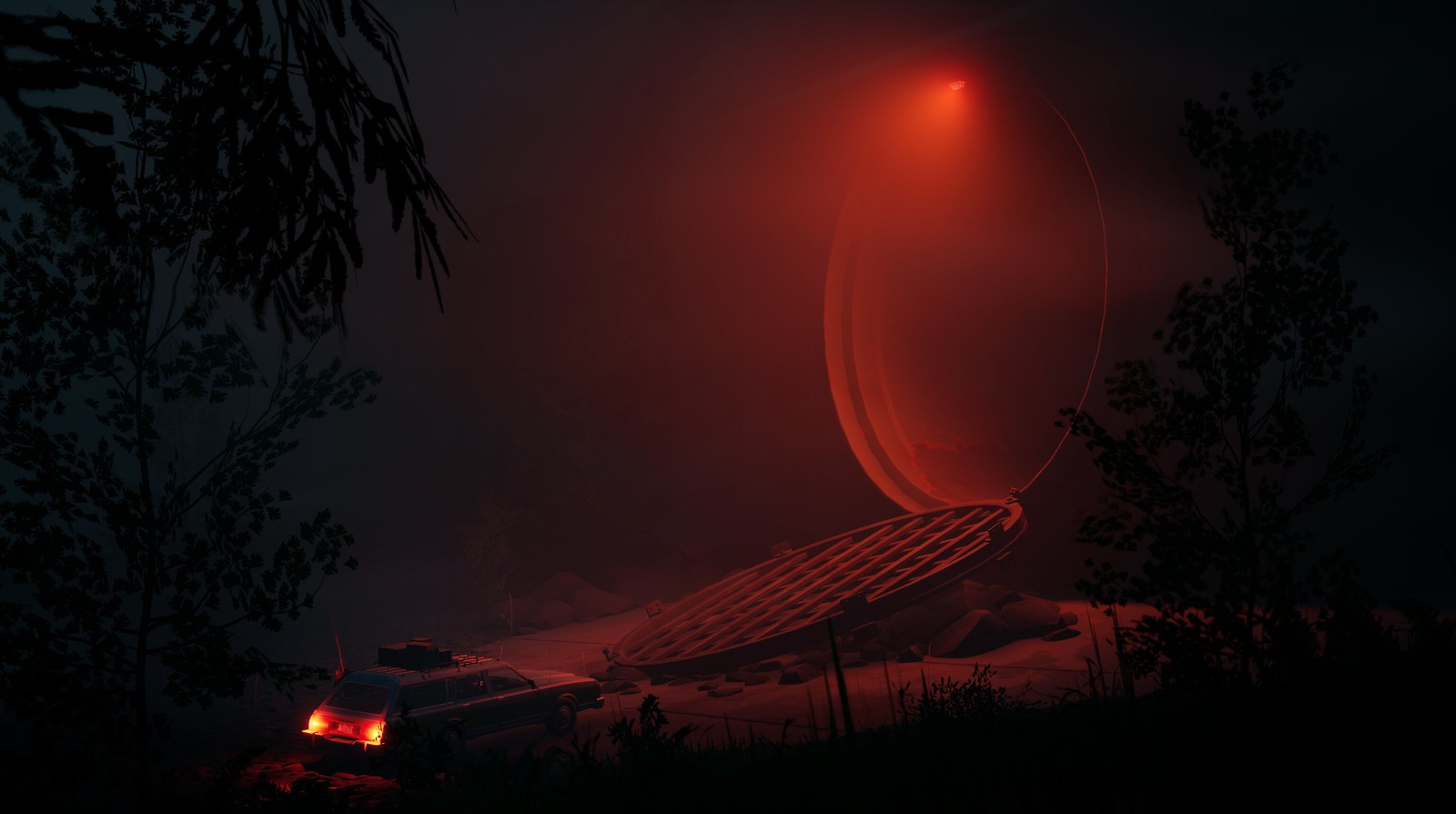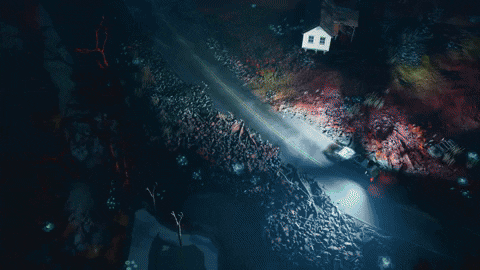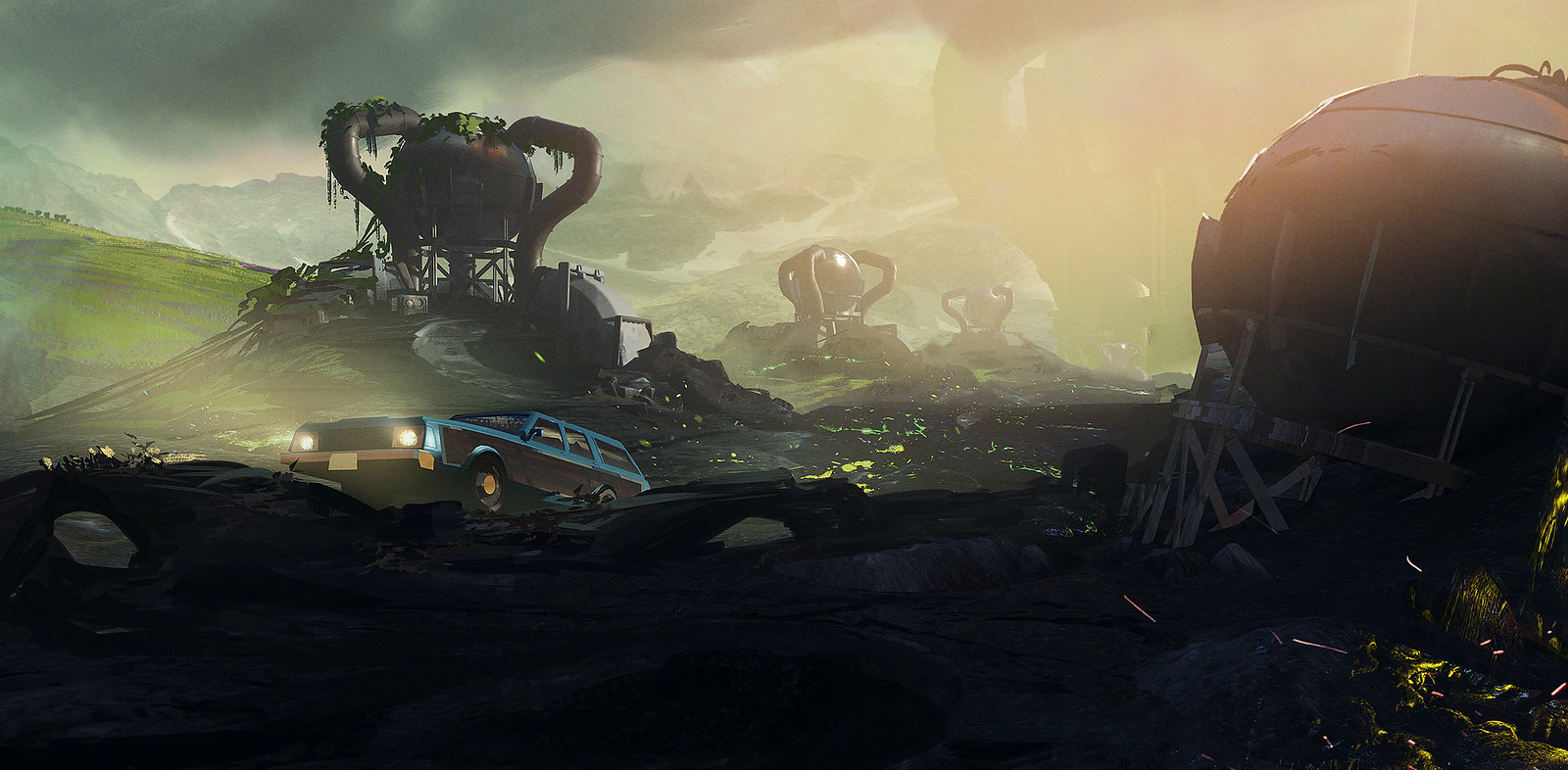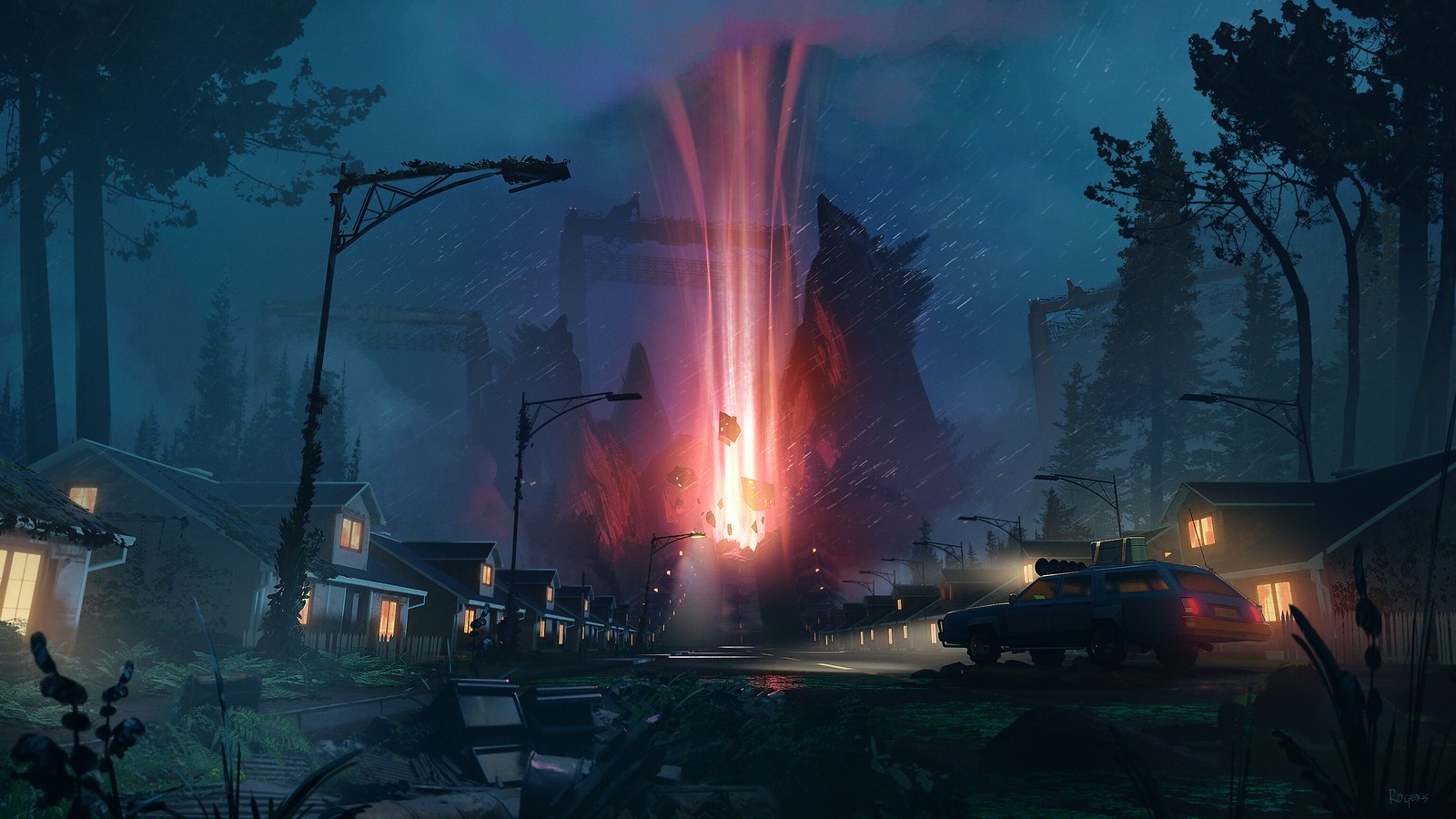Dev interview: How Pacific Drive tunes up the survival genre with a station wagon

We’ve all wondered why no one gets in a car and drives away from the terror in scary movies and games. Pacific Drive by Ironwood Studios lets us live out that scenario. This upcoming first-person survival adventure drives a customizable station wagon into the genre.
Ahead of the February 22 launch date, we spoke with the game’s director, Alexander Dracott, about the inspiration behind this genre-twisting game and its development journey.
PlayStation Blog: What was the inspiration behind Pacific Drive?
Alexander Dracott: The initial idea goes back to some of my hobbies and growing up driving station wagons to go camping and out into the woods of the Pacific Northwest. The seed came from the things I saw driving alone in the woods, fog, and rain, seeing things like mining towns that haven’t seen the light of day. The game started as simple test car in the woods, and as we started inserting more mechanics, we decided you should be able to turn the car off and on. It should have gas like you should have to refuel your car. It became apparent that there’s this overlap between the maintenance of a car you would expect and the item juggling you want from a survival game. What we ended up doing is taking the pressure that is always on the player in a lot of survival games and pushed it onto the car, and it clicked. You’re forming this relationship with this car that becomes your protector.
Where did the idea of the Olympic Exclusion Zone come from, and how does it contribute to the game’s mechanics?
I’ve always been a big fan of zoned stories and players being isolated, but in a space filled with interesting mechanics. For example, a lot of the enemy anomalies aren’t zombies that you just shoot. They’re more interesting and unique, and discovering what they are is part of the experience. The idea behind the Exclusion Zone, something that the government has walled off, instantly clicked because it gave us the freedom to both tell an interesting story and build this world while also filling it with things like those anomalies that people are going to have to learn and discover through the game’s mechanics.

Why did the team decide on this smaller-scale gameplay loop versus a free-roam open-world title?
Initially, we were considering something that was a little bit more like a traditional survival game on a relatively large map. Our maps are big because you have a car and go quick. We found that while all of our survival mechanics were working, we wanted those rest stops. We wanted those breaks like looting and fixing up your car. With that came the birth of the garage as a permanent place that you could go to and fix up your car, take the time, and engage with the different systems that are in the game. That cemented into this idea of, “Okay, I’ve got my garage, but now I can go out and take these trips to other parts of the game world.”

Was it difficult to build so many mechanics around a car?
Pacific Drive is a big game full of systems that interact with each other, so there’s a general complexity behind it that’s always going to be hard to manage. On one hand, you want to be figuring things out, but on the other, these systems all need to be built up on their own. You don’t get a good picture until many are present and exchanging with themselves individually. And with car physics, unlike a lot of other car games where a lot of the focus on those titles is, “let’s take one engine that we’re building our game in and have 300 cars that feel distinct and unique.” For us, it’s the opposite. We’re going to have one car, but that car has to be able to get customized in different ways as players express themselves. How does the car still feel like the car between two players that have built it out completely differently? We build dedicated tools around that and figure out the right way to do it.

Are there any additions that didn’t quite make it into the final version of Pacific Drive you wish could make it in?
It’s a bit of a cop-out answer, but the answer is always just “more.” Whatever number of items that we were going to have, we pulled it back to a more reasonable number. That’s the case across our game, which is still absolutely packed with different items. Because there are tools you can use, resources you can grab, things you can interact with throughout the world, special things to bring back to your garage, and tons of car parts because so much of the car is customizable. We were always planning more of those, but we ended up pulling back to a reasonable number.
What’s your favorite feature in Pacific Drive?
As the guy helping to form the original idea, I’m biased by the atmosphere. The moments where the gameplay complements the atmosphere are absolutely incredible—those moments where this world absorbs me due to weather, visuals, and general vibe. What we were aiming for is a very unique field for the zone and its isolated beauty. You’re alone out there, but you still have those elements of gameplay that are present. You might see a dreary building in the fog and think, “Yeah, it’s a cool piece of set dressing, but maybe there’s stuff over there. See if there’s anything I can grab for my car.” Those moments stand out strongly for me.
What unique PlayStation 5 features can players expect from Pacific Drive?
The big one is the DualSense controller, for sure. We had something special once we started tuning the haptics, especially for the [adaptive] triggers, and how they interacted with the suspension, and what the car is doing. We figured out a very clever way to translate the change of the change of the suspension differences that the car is handling as it drives along and map that out into our rumble. You might drive over a bump and feel like the controller reacts appropriately. If something pops the wheel off your car, it will drop, and you’ll feel it drop. We also added noise into the simulation to help make it feel correct when driving on off-road surfaces. We’re really pleased with how the game feels on this controller.

Pacific Drive takes everything about the survival genre and throws a car into the mix, with tons of relevant atmosphere, obstacles, and pleasantries. When the game launches on February 22, 2024, you can tune up your car and hit the lonely roads.




